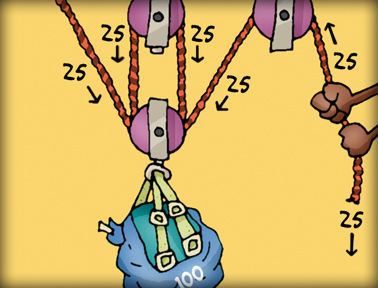Infographics in the Classroom
- March 24, 2014
- By Michael Kline
 Unless you been living under a rock for the last few years, you may have noticed this phenomenon that we like to call “the internet.” Along with this surge in all-things-electronica, we are also witnessing a veritable tsunami of imagery… from Facebook, Twitter, Snapchat (ask a high school sophomore), Instagram, and many others. You may have also noticed a recent surge of information graphics, or infographics as they are known to most. These often vertical displays (due to the nature of your web browser’s penchant for scrolling) are finding more and more acceptance as a way to quickly dispense information or knowledge in a visual format.
Unless you been living under a rock for the last few years, you may have noticed this phenomenon that we like to call “the internet.” Along with this surge in all-things-electronica, we are also witnessing a veritable tsunami of imagery… from Facebook, Twitter, Snapchat (ask a high school sophomore), Instagram, and many others. You may have also noticed a recent surge of information graphics, or infographics as they are known to most. These often vertical displays (due to the nature of your web browser’s penchant for scrolling) are finding more and more acceptance as a way to quickly dispense information or knowledge in a visual format.
As any good designer will tell you, the best way to get your thoughts across to an audience (and greatly increase the comprehension) is via that wonderful marriage of words and pictures; an idea that has held sway at least since the day that King Tut’s art director was tasked with recounting his boss’s doings along the river Nile. (To wit: Carved stone is not so easy to erase or correct.)
Infographics (also known as ideograms and cuneiforms) have found special interest through social media sites, and none quite so much as Pinterest, likely because of its simplicity. If you’ve not yet tried it, search the term infographic and I will wait here while you scroll through all of the results.
Are you back? Good! Let’s discuss ways that infographics are used as learning tools in the classroom, as well as a way that your students can create their very own infographic.
There are many low-cost or free resources available for these visual types of information, not the least of which is the Kids Discover website (which I must assume you are reading from at the moment) that offers infographics on many varied topics, including Biomes, Mesopotamia, Simple Machines, Essential Vitamins, Continental Drift, Rocks and Minerals, just to mention a few. Click here for the direct link, and click here if you’d like access to some classroom-essential lesson plans as well.
Infographics come in many different varieties and flurries of subject matter. You might find the history of coffee interesting, or the relative heights of all the mountains of the world, or the subway system in London (The Tube). There’s always one to be found on cellphones, road racing bicycles, healthy eating (remember the food pyramid?), or the history of Miley Cyrus’s haircuts. Wait…
Anyway, how about rallying your students to produce a one-of-a-kind infographic, especially for your classroom? It’s not terribly difficult if you stick to the essential steps, which are:
1) Brainstorm. Have students discuss subjects that are of interest to them and/or the school.
2) Do the research. Compile more information than needed and trim the results. The best infographics are visually based without a lot of text (which can intimidate the viewer).
3) Write it out. Find the bullet points, and have students express those in simple, compelling prose. And I can’t say this enough… writing comes first. Pictures second. More on this…
4) Establish a design (do thumbnails) so that the information follows a logical path and doesn’t wander (use numbers if need be).
5) Find someone who’s a consistent letterer, and hand that person the job. Use larger print for the bullet points, and smaller print for the supportive text. Don’t forget a main title for your infographic as well.
6) Use responsive color schemes. Warmer colors such as reds and yellows get people excited, and cooler colors such as blues or purples tend to have a calming effect.
7) Establish a team to produce the imagery, whether it’s hand drawn, cut from magazines, or everyday found objects. And always defer to the written word when establishing what makes a good visual and what doesn’t. Your pupils can also use charts for data and word balloons if they wish to express certain sentiments on a topic.
8) Assemble the creation. Find some posterboard or oversized cardboard that will support your infographic (especially if you plan to pin or glue found objects to it). Follow the layout and try to use contrasting colors and images. The best infographics tend to draw people in from a distance. And don’t forget to have your artists and writers sign the backside of their project.
You will likely find that in the process of having your students create their own infographics, they will have no shortage of subject matter, and no shortage of secondary story lines (not just the playground, but insects found on the playground, how weather affects the playground, rules while on the playground, etc.). Don’t discount these “satellites.” Simply put them in the bank for the next project, and you’ll never run out of ideas for future graphic expressions.
Be creative in using infographics in the classroom, have fun with it, and maybe, just maybe, someone someday will carve your educational exploits in stone.
Teach. Learn. Enjoy!

Kids Discover Talks with Television Lighting Designer Christopher Landy About the Rockefeller Center Christmas Tree Lighting
- December 9, 2025

It’s the Most Wonderful Time of the Year… For Community Service Projects!
- December 8, 2025

The Rockefeller Center Christmas Tree Lights the 2025 Holiday Season in New York City
- December 3, 2025